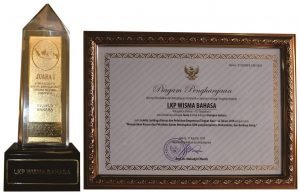I was washing my feet with a bucket of water from the well when I noticed that the door to the sprawling, deserted house was ajar.
A few minutes earlier we had been inspecting the grave of the man who’d lived there. It had a splendid, well-tended headstone and his family tree was carved into a marble block on the wall beside portraits of him and his wife.
Everybody washes their feet after they visit a graveyard. It may be practical but there’s definitely some superstition involved too. So I let my feet dry in the sun for a moment and then wandered inside. I’d often been curious about this mansion-like house – and about the man who built it. Various ageing relatives live in peripheral parts of it, or in outlying buildings. But the main house just seemed to be abandoned. There was much reverential talk about its former occupant. There was also talk about how squabbles between his children had caused the place to fall into disuse and disrepair.
It was an impressive, spacious house although everything was choked in dust and damp smells. There seemed to be twenty or more bedrooms. Yellowing photographs on the wall showed his smiling children. Parts of the house seemed to be neither indoors or outdoors. And there always seemed to be yet another door leading to yet another room or space of some kind.
It was then that I saw it. I was standing in the main guest lounge (ruang tamu) and there, on the wall, was an oil painting showing the owner of the house and a young looking President Suharto sitting side by side on a sofa, smoking cigars. For some strange reason, the painting shocked me. After a moment I realized that I was leaning against the same plush red sofa as was in the painting. So I decided to sit down and study the two men for a while.
From what I’d heard, this man’s fame and fortune had been based on his ‘special powers’ and his ‘special knowledge of Javanism’. He was widely revered and, by most accounts and perceptions, his powers were real. As a young man, he had been one of the future President’s army buddies and confidants.
Actually, I hadn’t been visiting his grave. I’d been visiting the grave of his niece who had been granted permission to be buried near him, in a special cemetery he had built for himself and his extended family before he died. It had been 1000 days since she had died. As is the way, we had come to sprinkle red and white rose petals on her tombstone and pay our respects, just as we had done at the funeral, and on the 3rd day, the 7th day, the 40th day, and the 100th day too.
I gazed up at the oil painting. The cigars. The cups of tea. The red velvet. The relaxed smiles. General Suharto looked rather slim and debonair and I reckoned the picture dated from about 1970. Or maybe a bit later. The General’s gifted adviser also looked quite distinguished. He used to advise him – amongst other things – on when to do things and when not to do them, according to the Javanese calendar, somebody once told me.
For some reason I started thinking about a story my landlord had told me about the kampung my homestay is located in. One day, out of the blue, he told me about the man who ran the little, all-purpose shop on the other side of the road – a thin, almost toothless, sun-dried gentleman with long fingers and a tuft of yellow white hair. My landlord told me that this unassuming looking fellow had been the leader of a group of men from the kampung who had killed several of their neighbours during the tragic events of 1965.
Some soldiers had visited him one day and after they left, he and a few local men had rushed out and dug a grave for one of their neighbours, a man who worked in a government office. Then they had sat down and waited for him to come home from work. Somehow, the man must have got wind of it, because he never showed up. In fact, nobody ever heard from him again. Maybe somebody else killed him. It seems that he had voted for the PKI in the previous election, although somebody else (nearly forty years later) had come out and said that the whole things was a misunderstanding and that the man had been blacklisted by an ambitious office rival.
For forty years the man with the tuft of yellow white hair had shown no remorse – in fact, quite the opposite. But once Suharto stepped down and people had started to talk a little more about the chaos and the tragedy all those years ago, he had apparently admitted that he had found his occasional contact with army officers terrifying.
I had once met somebody at the Wisma Bahasa who was going to work for a local NGO that promotes reconciliation between those who killed and those who had relatives who were killed back in 1965. Exactly who did what to whom, and why, are for the most part mysteries frozen in time. Even the full extent of what happened is unknown. Everybody who was caught up in it is getting so old now.
The two gentlemen in the oil painting were frozen in time too, something accentuated by the fact that the furniture in the room was still laid out in exactly the same way as in the picture. One of the two men was now buried in a special cemetery about 400 yards from where I was sitting.
Back outside again, I washed the dust from the house from my feet, and left the door ajar – just as I’d found it. (by Adrian Coen)
 Community Development
Community Development International Translation
International Translation Our Foundation
Our Foundation